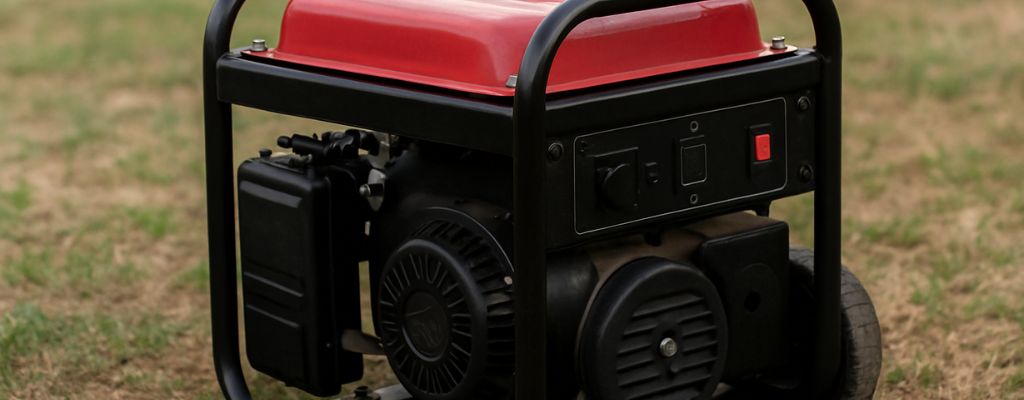
How Can I Tell If My Generator Is Overloaded?
If your generator’s behaving like it’s just finished an Ironman—loud, sweaty, and refusing to keep up—it’s probably overloaded. Generators have a way of dropping hints before they pack it in completely. Stick around and I’ll walk you through the warning signs, simple checks, and quick fixes so you can keep the power flowing without frying your gear.

Recognising the Signs of Generator Overload
Signs of Generator Overload: The Audible and Visual Cues
Generators don’t usually suffer quietly. When they’re under too much load, they complain—loudly. That might mean strange rattles, struggling revs, or even the faint whiff of something burning. Ignore those clues and you’re inviting a breakdown.
A Struggling Generator: Bogging Down and Fluctuating RPMs
If the engine sounds like it’s wheezing after running up a hill, it’s a clear sign of trouble. Those uneven revs—up, down, up again—mean your generator is working harder than it should. Left unchecked, that strain can lead to overheating or a complete stall.
Visual Indicators: Dimming Lights or Soot from Your Generator
Lights dimming or flickering while on generator power are never a good sign. If you also notice black soot puffing out of the exhaust, that’s a hint your generator’s fuel isn’t burning properly—usually because it’s overloaded.
Understanding Generator Overload Protection
Your Generator's Circuit Breaker: The First Line of Defence
Most generators have a built-in circuit breaker that’s designed to trip when you push them too far. It’s like a safety referee—cutting the power before the generator’s internals take a hit.
Overload Indicator Lights and Error Codes on Your Generator's Display
Many newer models come with overload lights or error codes. If yours is lighting up like a Christmas tree, it’s trying to tell you to cut back on the demand before it shuts itself down.
How Can I Tell If My Generator Is Overloaded Using Tools and Measurements?
Using a Watt Meter or Clamp Ammeter for Your Generator
Calculating and Monitoring Your Generator's Load in Real-Time
A watt meter or clamp ammeter takes the guesswork out of load monitoring. Plug in, take a reading, and compare it to your generator’s rated capacity. If the numbers are climbing too high, you know what’s causing the issue.
Sizing a Generator: Understanding Starting Watts vs. Running Watts
Some appliances—think fridges, air cons, and pumps—draw a big burst of power to start, then settle into a lower usage. Forget to factor in those starting watts, and you’ll overload your generator without even realising.
Unique Overload Characteristics of an Inverter Generator
The Electronic Overload Monitoring of an Inverter Generator
Inverter generators are a bit smarter. They’ve got sensors that keep tabs on the load and will often flash an overload light before automatically shutting down.
How an Inverter Generator Differs from a Conventional Generator Under Load
Unlike their conventional cousins, inverter generators adjust their engine speed to match demand. That’s great for fuel efficiency but means a sudden spike—like a pump kicking in—can tip them into overload quicker.

Troubleshooting and Fixing Your Overloaded Generator
How to Fix an Overloaded Generator: A Step-by-Step Guide
Disconnecting Appliances and Reducing the Load on Your Generator
Start by switching off and unplugging non-essential gear. Keep the fridge, freezer, and any critical medical equipment running, but give the rest a break.
The Proper Way to Reset a Tripped Breaker on Your Generator
Once you’ve reduced the load, find the breaker on the generator. Flip it fully to ‘off’ before turning it back on. This prevents arcing and gives the generator a clean restart.
Generator Overload with Nothing Plugged In: Diagnosing a Deeper Problem
Internal Electrical Shorts or Faulty Components in Your Generator
If overload warnings pop up even with nothing connected, you might have an internal short, damaged windings, or worn insulation. These issues are best left to a qualified technician.
Sensor Malfunctions That Cause a "Ghost" Overload on Your Generator
Sometimes the culprit is just a dodgy sensor sending false overload signals. Replacing or recalibrating it can fix the problem without tearing the generator apart.
How Can I Tell If My Generator Is Overloaded Reddit: Community Insights
Common Solutions and User Experiences from the Generator Community
Plenty of everyday users will tell you the solution is often simple—unplug a few devices, reset the breaker, and make sure you’re not asking too much of your generator.
Troubleshooting Unique Overload Scenarios for Your Generator
Some stories are more unusual. From welders that push small generators to their limits, to air con units causing unexpected surges—community tips show how creative load management can solve tricky overload problems.

Conclusion: Protecting Your Generator with Proactive Load Management
Spotting overload early can save you from expensive repairs and frustrating blackouts. Listen for strange noises, watch for dimming lights, and use tools to check your load. With a bit of planning—and the occasional appliance shuffle—you can keep your generator running smoothly for years.


